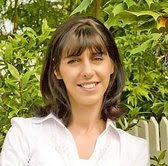 “A lot of people say they want to get out of pain, and I'm sure that's true, but they aren't willing to make healing a high priority. They aren't willing to look inside to see the source of their pain in order to deal with it.” ~ Lindsay Wagner
“A lot of people say they want to get out of pain, and I'm sure that's true, but they aren't willing to make healing a high priority. They aren't willing to look inside to see the source of their pain in order to deal with it.” ~ Lindsay WagnerAbout a week ago, my oldest son got hurt playing basketball. What initially appeared as a red, slightly swollen bump, changed color over time, and became a silver-dollar-sized brown and yellow bruise covering the inside of his wrist.
The other night, he reached out to pick up something while I was cooking dinner, and I asked if his arm still hurt. He shook his head and looked at the bruise; “look mom,” he said, “the bruise looks like a doughnut now.” And it really did. What used to be a solid blue mark finally faded to a rusty brown circle encrusting a small area of healed skin.
To my surprise, he said: “Isn’t it strange how so many things that happen on the outside seem to relate to experiences inside of ourselves?”
When I asked what he meant, he replied: “People think that you heal from the outside and you have to treat your body, but even this bruise shows how things truly heal from the inside out.”
I was stunned at his ability to embrace such a philosophical view of things at such a young age, and became quite curious about his theory. The way he explained it was simple, yet it was probably more powerful than most complicated versions I’ve heard before. Adults can make a mess of things when they try to inflate their ideas with big words to impress, desperate to appear erudite and wise; kids have no time for garnishes, and go straight to the heart of things.
With the perception of a fifteen-year-old naturally fascinated by electronics, he sees the outer body as a machine fed by a central “life engine”. The energy received from the central source is then distributed through an intricate wiring to reach all areas of the body and mind, all filaments connected to one another. If one bulb burns out, a whole section shuts off, and doesn’t receive energy.
The central supply is continually fed by our daily experiences and it runs freely at the center; if something happens to it, or if it slows its flow to a trickle, all the filaments depending on its power gradually turn off.
I thought about this theory long after my son went on his way. When our flow of life energy is slowed down or interrupted, a compromised sense of wellness is the natural consequence. The most important question at this point would be whether wellbeing can be restored if the flow is once again regulated. Would the secondary channels be irreversibly damaged after not being fed for a long period of time, or could they fill up with a new supply of life energy and resume their work?
Personally, I believe that some of them – those that have completely dried out over time – are probably irreparable, but I also think that a new network can be created once the flow reaches new, consistent strength.
Our work doesn’t revolve around producing the energy itself, as it is self-renewing; all we need to focus on is the removal of blocks that prevent it from moving freely.
Guilt is often the mother of all blocks, followed closely by anxiety and fear. We can easily picture our blocks like sandbags we place around the source of energy to block its flow; if we remove the sandbags, nothing can stop the energy from radiating out from the core.
If we can learn to heal from within, just as Stephen’s bruise is doing, we can hope that when the process is complete, full power will once again be restored.










